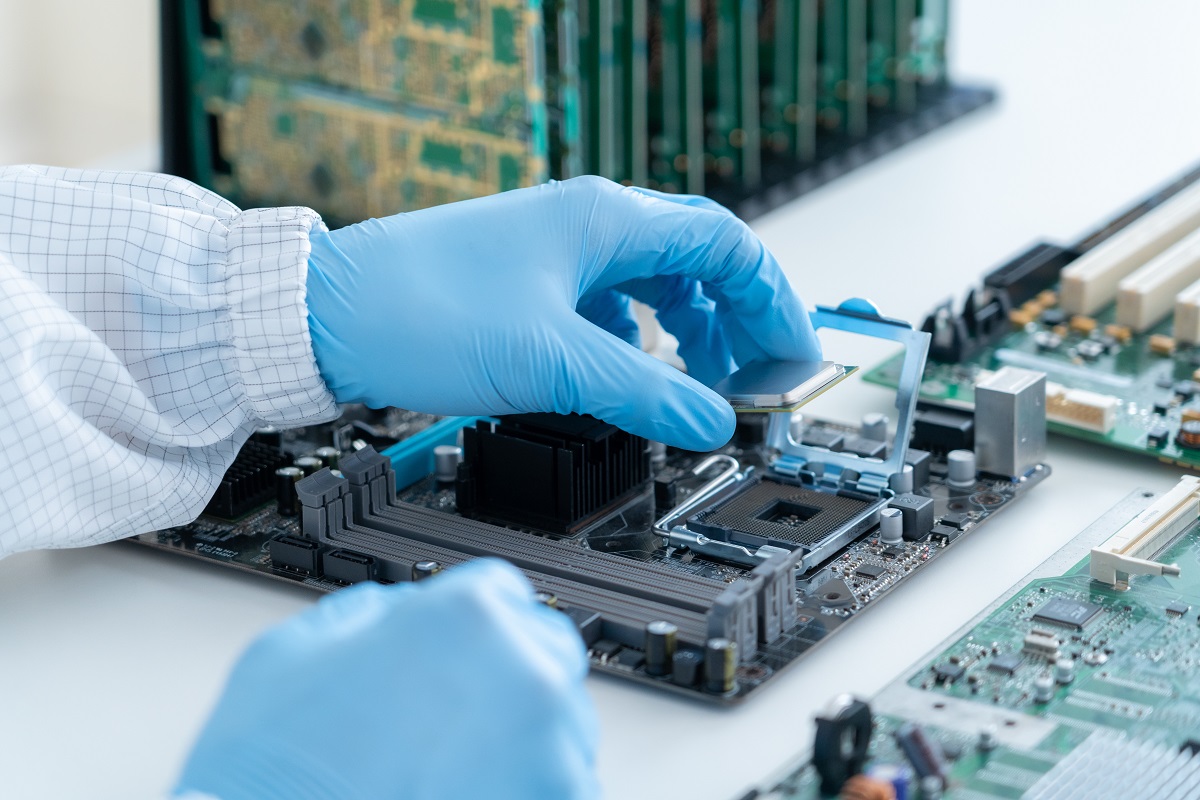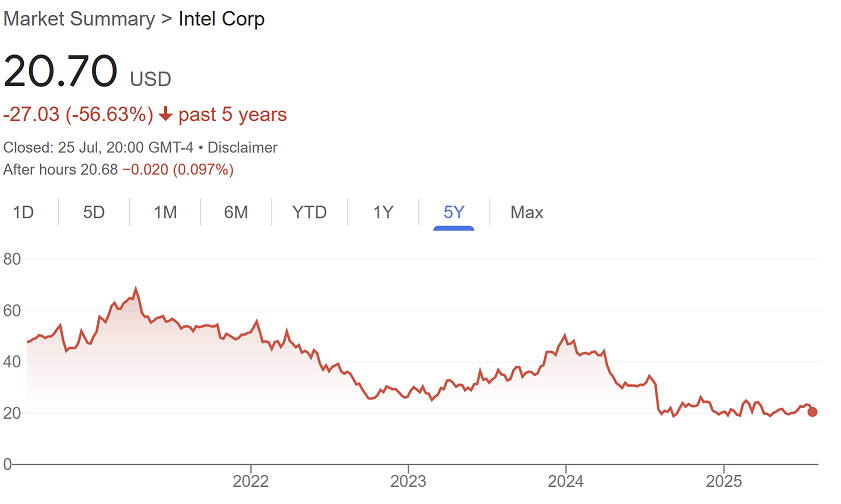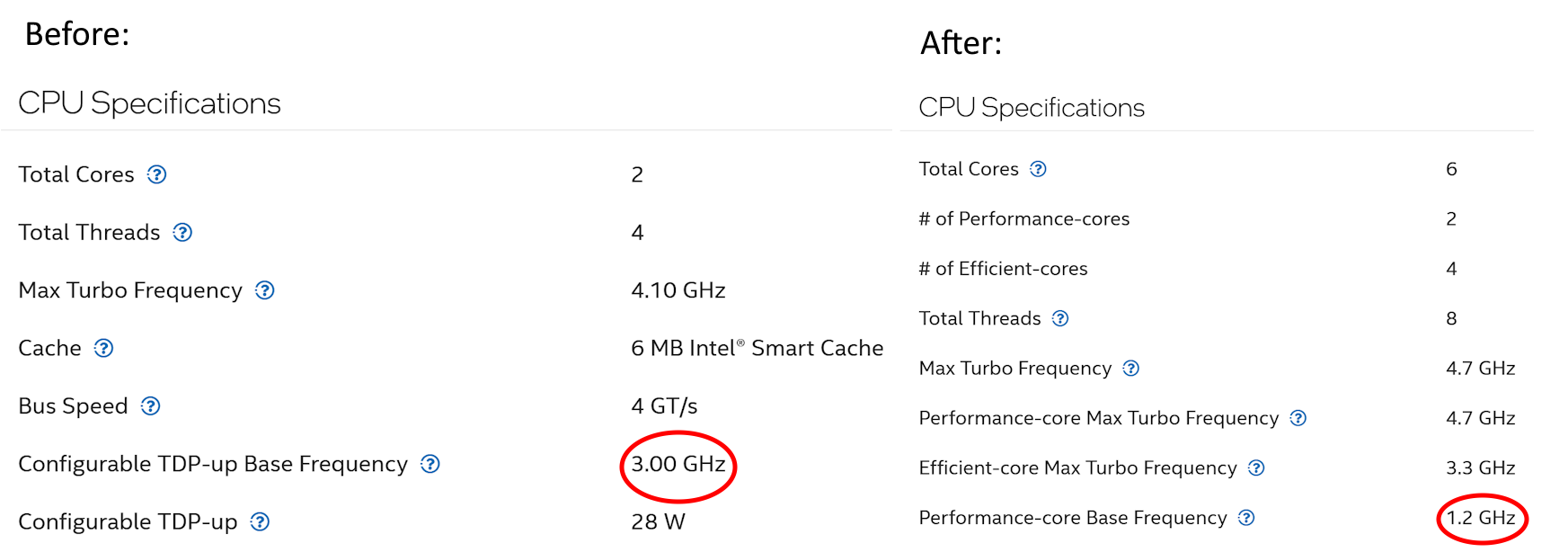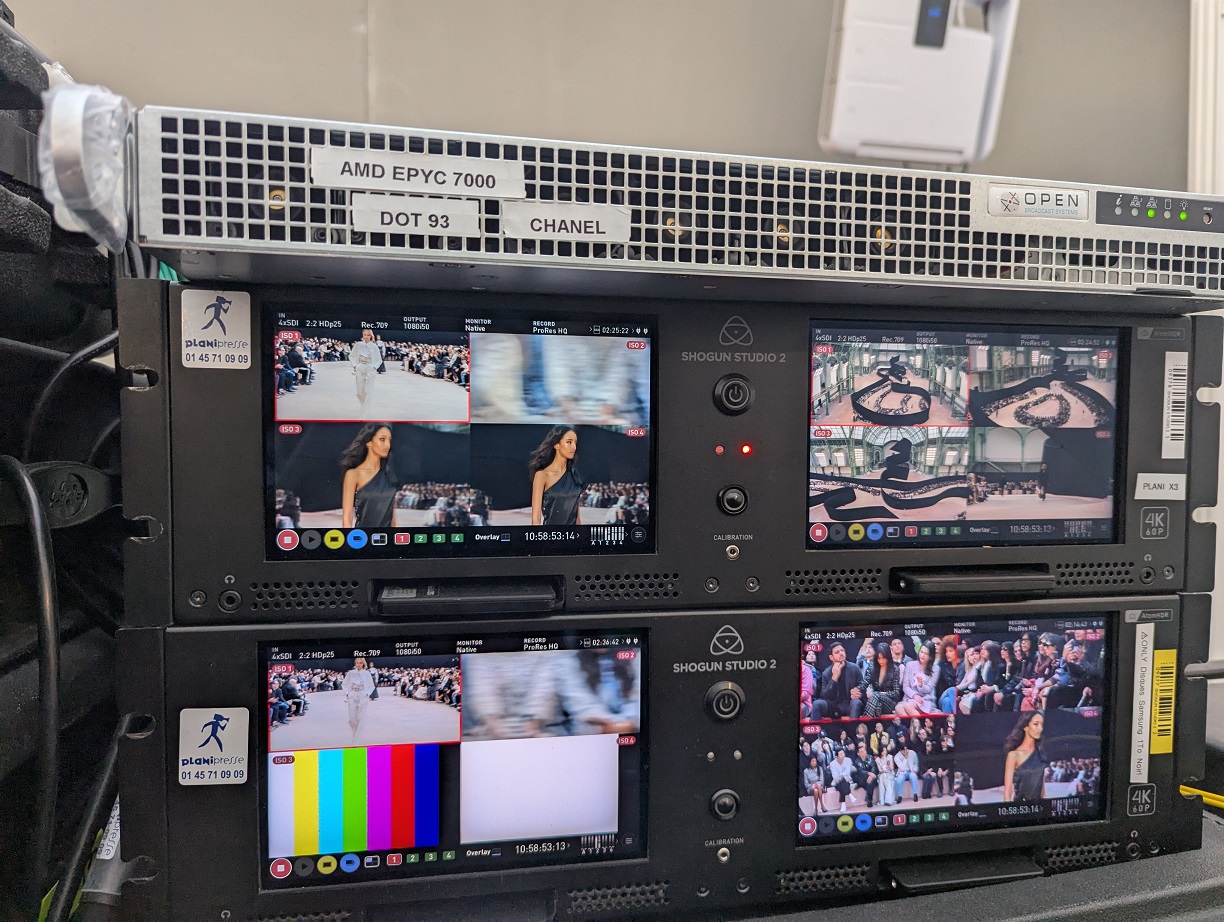 At Open Broadcast Systems, we have historically used Intel consumer CPUs in our small form-factor NUC products. These CPUs provided adequate performance for our compact, entry-level encoders and decoders.
At Open Broadcast Systems, we have historically used Intel consumer CPUs in our small form-factor NUC products. These CPUs provided adequate performance for our compact, entry-level encoders and decoders.
But we have moved away from Intel consumer CPUs to AMD. In this article, we’ll explore the reasons behind this change and what it means for our offerings.
Intel CPU frequencies dropping like their share price

It’s no secret in the business world that Intel is in trouble. Over the past five years their CPUs have not performed vs AMD and they are several generations in chip design behind. Their share price is tumbling. Let’s look at how this affects us.
Intel is having huge problems maintaining a consistent CPU clock speed (frequency). While the new CPUs do reach relatively high frequency peaks, they cannot sustain these levels and drop back to their base frequency as soon as the chip overheats. This variability makes it impossible to provide a consistent compute experience. The significant decline in performance makes the new Intel consumer cores suitable only for simple background consumer tasks, not for continuous operation such as video contribution.
The level of performance that you can rely on consistently is indicated by the base frequency. To illustrate the point, here is a comparison of two specific chips, one from the 11th and one from the 15th generation:
 11th Gen Intel® Core™ i3-1115G4 – See the specifications on the Intel web page
11th Gen Intel® Core™ i3-1115G4 – See the specifications on the Intel web page
15th Gen Intel® Core™ 3 100U – See the specifications on the Intel web page
The newer system is nearly three times slower!
High-performance video contribution requires consistent and reliable processing capabilities. The low base frequency of the new Intel CPUs has made them unsuitable for almost all contribution use cases, except for basic applications involving low-bitrate decoding.
The Move to AMD
In light of these challenges, we have completed the transition to AMD CPUs for our NUC products. AMD processors have demonstrated consistent and superior performance, often providing up to 2-5x faster processing speeds compared to their Intel counterparts. With this enhanced performance, our customers get the reliability they need for their video applications.
BYOD (bring your own device) Considerations
Many of our clients build their own systems. It’s essential to be aware of the potential pitfalls when selecting Intel CPUs. Intel CPUs might have a peak performance that’s faster than the past but the “base” performance is much slower. This can cause problems for broadcast transmissions.
Conclusions
It is clear that AMD has won and it’s extremely difficult/impossible for Intel to come back. Care must be taken when selecting CPUs. At Open Broadcast Systems, we take care of this with turnkey solutions that perform reliably and consistently. Find out more about our turnkey hardware encoders and decoders.

